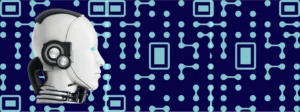In a recent report by InfoQ, it has been unveiled that Java is stepping up its game in the realm of expressive coding with the introduction of record patterns. The feature, formalized under Java Enhancement Proposal (JEP) 440, has now reached a targeted status for Java Development Kit (JDK) 21, marking a significant enhancement for the language.

✅ AI Essay Writer ✅ AI Detector ✅ Plagchecker ✅ Paraphraser
✅ Summarizer ✅ Citation Generator

Key Takeaways:
- The introduction of record patterns under Java Enhancement Proposal (JEP) 440 significantly boosts the expressiveness of Java coding. This allows developers to deconstruct record values, resulting in more powerful data navigation and processing.
- Nested patterns provide developers with the ability to deconstruct complex and nested data structures directly. This leads to more concise, less error-prone code and allows for a more declarative style of coding.
- These improvements in Java come with risks, like changes to current code and learning new features. However, the potential for further enhancements in record patterns is promising.
Previous versions of this feature, delivered via JEP 405 and JEP 432 in JDK 19 and JDK 20 respectively, received feedback leading to further enhancements. The finalized feature now allows for the deconstruction of record values through record patterns, a powerful tool for data navigation and processing. This pairs well with type patterns, which have been extended for use in switch case labels via JEP 406 and JEP 420.
Java’s enhancement of record patterns reflects its steady shift towards a more declarative and data-focused programming style. This comes in the wake of the successful integration of pattern matching with the instanceof operator, which was introduced in Java 16 through JEP 394.
Record patterns provide the ability to test if an object is an instance of a record and directly deconstruct its components. Nested patterns take this a step further, allowing for decomposition of the record value. This powerful evolution of record patterns means more sophisticated data queries can be constructed, leading to more concise and less error-prone code.
The updated functionality also complements the switch expressions introduced by JEP 441, allowing patterns to be used in case labels for more expressive code, reducing the potential for bugs due to missed cases in switch statements.
Potential Challenges $ Future Development
However, these changes are not without potential risks. As with any change to a language, there is the potential for impacting the existing codebase, and now every developer will need to familiarize themselves with record classes and pattern matching, features relatively new to Java.
Moving forward, there are possibilities for further extensions of record patterns. Potential developments include varargs patterns for records of variable arity, unnamed patterns for matching any value without declaring pattern variables, and patterns that can apply to values of arbitrary classes.
Conclusion
In essence, the advent of record and nested patterns in Java is a substantial advancement for the language, enabling a more declarative style of coding which could yield cleaner, more comprehensible code. For those looking to learn Java, understanding these new features can provide a deeper insight into the language’s capabilities and help in creating efficient and well-structured programs.
Clearing the Air: Debunking Myths Surrounding Java Record Patterns
The realm of Java Record Patterns is one that is often shrouded in misconceptions. While these enhanced features promise significant strides towards more declarative and efficient coding, it is essential to address some common myths. By doing so, we aim to ensure a better understanding and proper application of these transformative patterns in real-world programming tasks. Let’s now embark on a journey to debunk these misconceptions and shed light on the true nature and potential of Java Record Patterns.
Myth 1: Record Patterns are Complicated and Difficult to Understand
While record patterns may seem complex at first glance, they’re designed to simplify code and make it more readable. Record patterns deconstruct data into its components, allowing developers to access these parts directly. This reduces the need for verbose code, and once you understand the principle, it becomes an intuitive way to navigate and process data.
Myth 2: Record Patterns are Only Useful for Large-scale Projects
Record patterns can be leveraged in both small-scale and large-scale projects. They offer an efficient way to destructure data, which can lead to cleaner and more maintainable code. This can be just as useful in a small project with a single developer as it is in a large project with a team of developers.
Myth 3: You Need to Be a Java Expert to Use Record Patterns
While understanding record patterns does require a grasp of Java fundamentals, you don’t need to be an expert to use them. Record patterns are a tool designed to make coding more efficient and expressive. With some practice and experimentation, developers at various skill levels can take advantage of this feature.
Java’s record patterns are a transformative addition to the language, designed to enhance the readability and efficiency of coding. By debunking these common misconceptions, we hope to encourage more developers to explore and utilize this powerful feature to its full potential.
Read also:
C++ for Beginners: Top Learning Resources Explained
Exploring the World of Programming Languages: Types, Tips, and Personal Experiences
Java and JavaScript: A Comparative Analysis of Two Distinct Programming Languages
Follow us on Reddit for more insights and updates.





Comments (0)
Welcome to A*Help comments!
We’re all about debate and discussion at A*Help.
We value the diverse opinions of users, so you may find points of view that you don’t agree with. And that’s cool. However, there are certain things we’re not OK with: attempts to manipulate our data in any way, for example, or the posting of discriminative, offensive, hateful, or disparaging material.